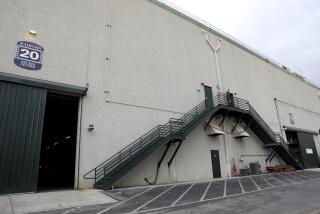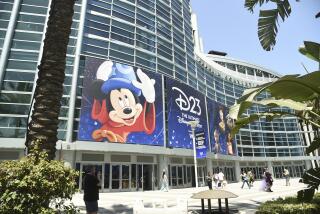Tinkerbell Owes Us a Perfectly Safe Park
- Share via
Let’s hope Disneyland officials don’t take last week’s report from state investigators as absolution. Yes, it’s always better in corporate circles when the hammer comes down on employees instead of the company, but then again, we’re talking about Disneyland here.
They’re different from other companies. At least, they should be.
So there should be no joy on Main Street just because safety investigators blamed the fatal Big Thunder Mountain accident 12 weeks ago on human error and not Disneyland’s maintenance procedures, saying they are adequate if properly followed.
It’s a distinction, but barely.
Disneyland officials have said all the predictable things about park safety being their paramount concern. Thing is, that’s something that hardly ever needed to be said years ago.
Nowadays, the park is being forced to say it far too often -- the result of fatal accidents in 1998 and this year; an incident on a Roger Rabbit ride in 2000 that left a youngster with severe brain damage; the derailment of the Space Mountain ride in 2000 that sent nine people to the hospital, none with life-threatening injuries.
A run of bad luck? Yes -- for the park’s customers.
“People have always gotten hurt at Disneyland, but they didn’t get hurt with such regularity for doing nothing wrong,” says David Koenig, an Aliso Viejo author of two books on Disneyland. Until recent years, Koenig says, all of the fatal accidents and the vast majority of the serious, non-fatal ones -- incidents that might make the news, for example -- were the result of the victim doing something he or she shouldn’t have done.
That has changed, Koenig says. As The Times reported three weeks ago, a number of current and former employees think the park’s cost cutting has contributed to the problem. That complaint leads down a side road: that the cuts undermined employee morale and changed the “culture” from the old days at the park.
That’s a hard thing to quantify and is a claim that could be leveled against any number of companies.
But those companies aren’t Disneyland, the land of enchantment. We don’t want Walt Disney’s brainchild to morph into some faceless widget-making operation.
Do we romanticize Disneyland? You bet we do.
The whole place was built on a romanticized notion that going to Frontierland or Fantasyland meant you could leave the real world behind. Koenig talks of an earlier incarnation of the park where the spirit of Walt Disney reigned supreme and you could eat off the sidewalks and the whole park glistened in the moonlight. That’s the Disneyland we want.
To me, the most telling anecdote in The Times’ story earlier this month was that of the employee who made it a practice of checking lap bars every day on one of the rides. When a consultant suggested such meticulousness was time poorly spent because the bars never failed, the employee replied that that was why they never failed.
Koenig’s “Mouse Tales” was published in 1994 and a follow-up in 1999. While Koenig was researching the latter book, he says, a worried employee predicted to him that the change in maintenance procedures eventually would result in a visitor’s death. Six months later, Koenig says, a man was killed by a flying hunk of metal while waiting on the dock for the Columbia sailing ship to be secured.
Is it fair to demand perfection from Disneyland, which entertains millions of people every year and has who knows how many moving mechanical parts on the grounds?
When it comes to preventing fatal accidents, the answer is yes. Why accept anything less from a magic kingdom?
*
Dana Parsons’ column appears Wednesdays, Fridays and Sundays. He can be reached at (714) 966-7821, at [email protected] or at The Times’ Orange County edition, 1375 Sunflower Ave., Costa Mesa, CA 92626.
More to Read
Sign up for Essential California
The most important California stories and recommendations in your inbox every morning.
You may occasionally receive promotional content from the Los Angeles Times.










